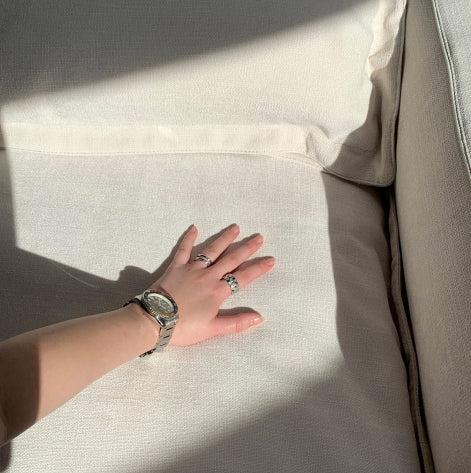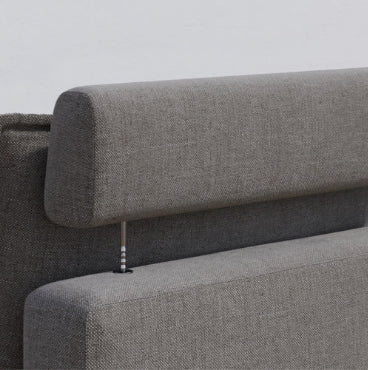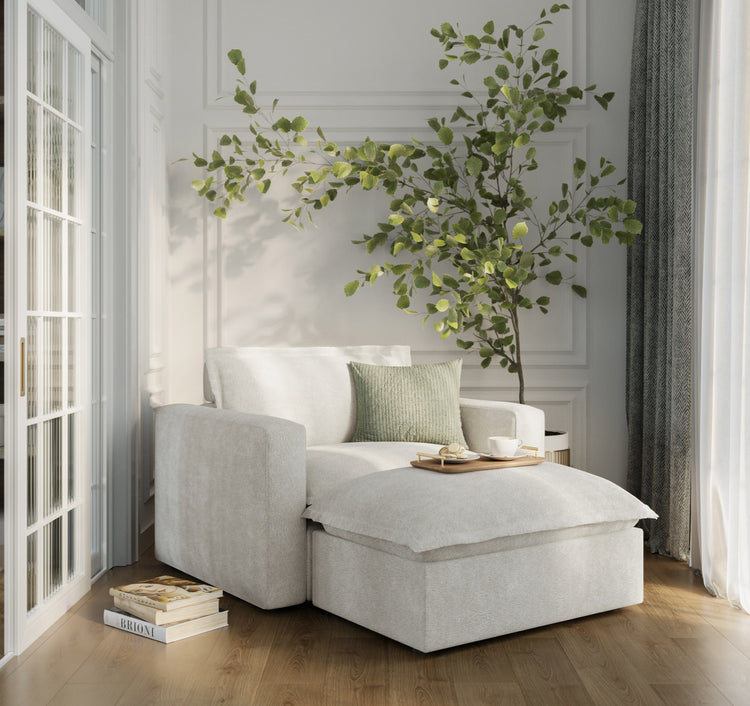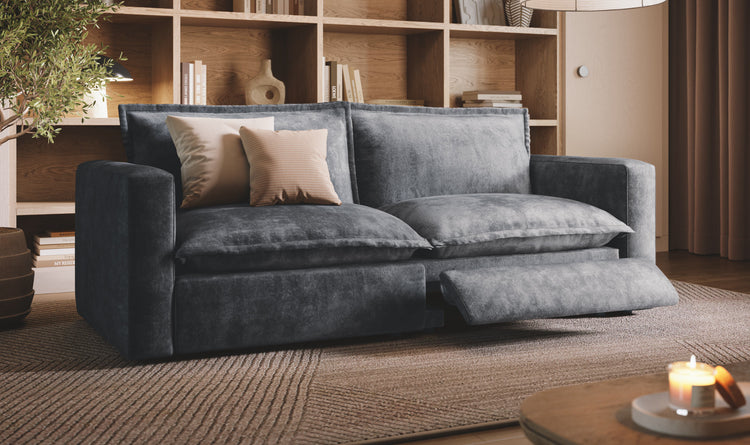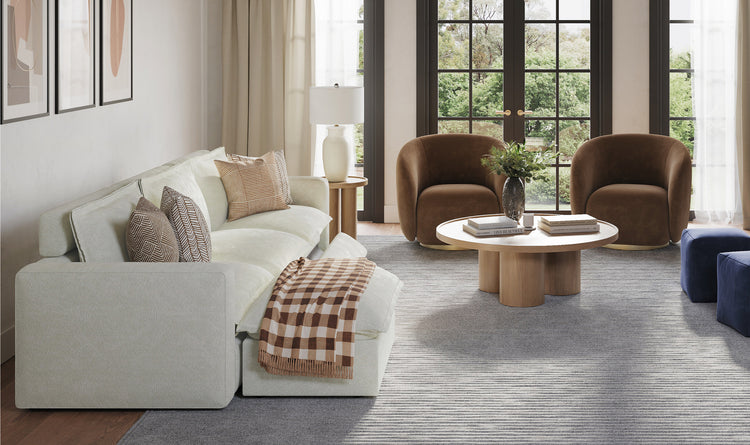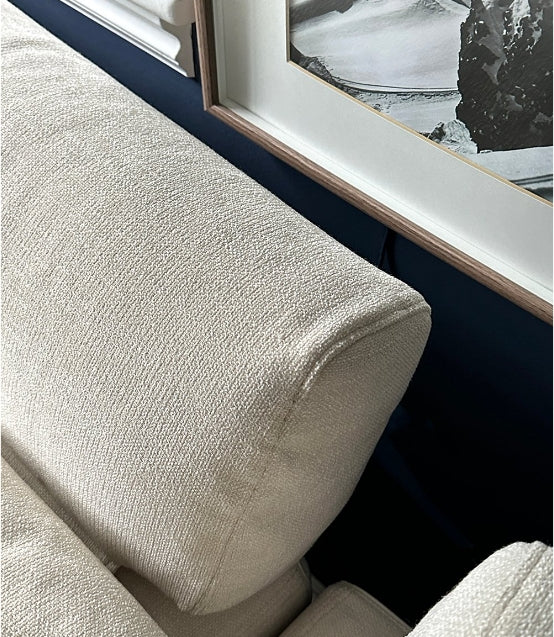A sofa is not just a place to sit; it's the heart of your home where memories are made and where you unwind after a busy day. But when it comes to figuring out how long a good couch should last, things can get a bit confusing. What makes one sofa stand the test of time while another starts sagging and looking worn out? In this guide, we're going to dive into what really goes into a sofa's lifespan - from the materials used to build it to how you take care of it.

How Long Will Your Sofa Last?
What's the Average Sofa Life?
Ever wondered how long a sofa is supposed to last before it's time to start sofa-shopping again? On average, a good-quality sofa can serve you well for about 7-15 years. Of course, that's if we're talking about a couch that sees regular use. The lifespan of your couch will vary based on quality; higher-end models often outlast those that are more affordably priced.
It's What's Inside That Counts: Materials Matter
The construction materials are crucial to the durability of your home sofa.
- Frame Construction: The sturdiness of a sofa frame impacts its longevity. Frames made from hardwood tend to be more durable than those made from softer woods or particleboard.
- Upholstery Type: Different upholstery materials have varying lifespans. Leather may last longer and develop character over time. For upholstery that lasts, consider durable velvet or specially-treated linen for elegance and resilience. For households with pets, opt for engineered fabrics designed to be stain and scratch-resistant, ideal for frequent use.
- Cushion Fillings: Cushions filled with high-density foam usually maintain their shape longer than those filled with lower-density foam, which may flatten out more quickly over time.

How Sofa Construction Influences Durability
The assembly and craftsmanship of a sofa affect how well it will hold up.
- Joints and Framework: A sofa's joints and framework are fundamental to its sturdiness and lifespan. When built with robust joinery methods, sofas can handle daily stress and maintain its shape and comfort for years without loosening or breaking down.
- Stitching Quality: Just as strong stitching holds clothing together better, sturdy stitching on a sofa ensures that the fabric stays intact and the overall structure remains solid.
By understanding these aspects of sofa design and construction, you can make more informed decisions about purchasing a sofa that's built to last. When choosing your next sofa, consider these factors carefully to invest in a piece of furniture that will stand the test of time.
What Tells You It's Time to Get a New Sofa?
Deciding when to replace your sofa might not be straightforward. However, certain clear signs indicate that it's time to start shopping for a replacement. Here's what to watch out for:
- Worn-Out Upholstery: The sofa's fabric is worn out, with areas that are frayed or significantly thinned similar to the wear and tear on favorite old clothing.
- Persistent Cushion Sagging: The cushions remain compressed and do not bounce back after use, indicating the filling has lost its supportiveness.
- Uncomfortable Seating: Sitting down feels unexpectedly hard, suggesting a breakdown in the sofa's support structures like springs or foam.
- Increasing Noise With Movement: Any new or increasing noises such as squeaks or creaks when the sofa is in use could suggest internal damage or loose components.
- Out-of-Date Appearance: The sofa's style looks outdated, making it conspicuously out of place compared to the rest of your home's decor.
- Inconsistent Room Fit: The sofa doesn't fit well in its space anymore, either due to a move or changes in room design, and disrupts the living area's layout or aesthetic.
- Loose Sofa Legs: The legs of the sofa wobble or have become unstable, compromising the furniture's safety and stability.
- Visible Frame Damage: There's noticeable damage to the sofa frame, like cracks or breaks, which can be considered the critical point for deciding on furniture replacement.
Regularly check these aspects of your sofa to ensure it remains both functional and comfortable. Being mindful of these signs will tell you when it might be time to start looking for a new one.
How to Keep Your Couch Comfy for the Long Haul
Maintaining the comfort and condition of your recliner couch requires a straightforward, consistent approach. Here's how you can ensure that your couch remains comfortable and durable over time:
- Evenly Distribute Use: It's important to use all parts of your sofa by sitting in different places. This helps avoid one area becoming more worn out than others.
- Use Protective Covers: If you have children or pets, or if you often eat on your sofa, using covers can protect it from spills and other damage.
- Vacuum Regularly: Dust and small particles can wear down the fabric of your sofa over time. Vacuuming your couch weekly can help prevent this.
- Clean Spills Quickly: If something spills on your couch, clean it up as soon as possible to reduce the chance of stains setting in.
- Cushion Maintenance: Make sure to turn over and shake your cushions out often so they keep their shape and wear evenly.
- Avoid Direct Sunlight: Keep your sofa away from constant direct sunlight which can fade and weaken the fabric over time.
- No Jumping: To keep your couch stable and intact, don't allow jumping on it.
By following these simple care steps, you can help extend the life of your couch. Consistency is key, so incorporate these habits into your routine to maintain the quality and comfort of your seating.

Final Thoughts
The lifespan of your sofa ultimately depends on choosing quality materials, consistent upkeep, and valuing durability over short-term savings. Consider your sofa a significant investment-aim for one that promises comfort for many years, ideally between 7 to 15 years, before needing replacement. When it's time for a new sofa, prioritize sustainable options that align with long-term use. By balancing comfort, cost-effectiveness, and attentive care, your sofa can be more than just furniture; it becomes an integral part of your home, woven into countless memories and providing reliable comfort. Make a wise choice and maintain it well, and your sofa will serve as a beloved element of your household for a good stretch of time.
